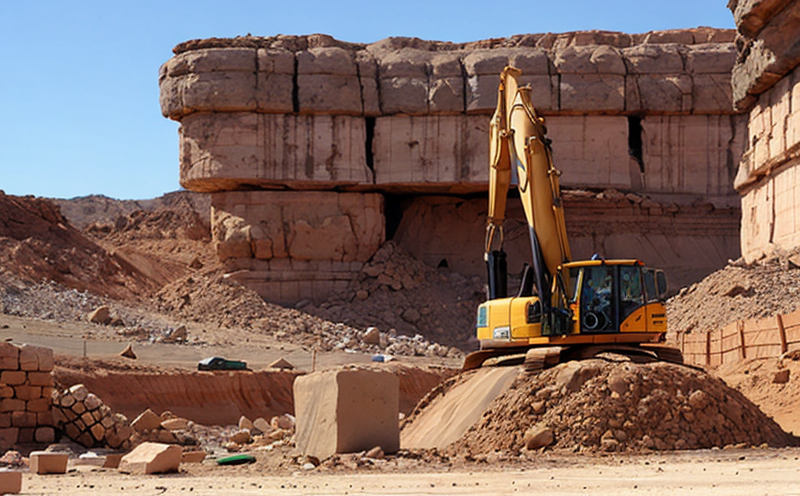BS EN 14579 Sound Speed in Rock Testing
The British Standard (BS) and European Norm (EN) 14579 is a critical tool for geotechnical engineers and mining professionals. It provides a standardized method to measure the sound velocity of rock samples, which is essential for assessing the strength and structural integrity of rocks used in various construction projects. This test helps predict how materials will behave under stress, ensuring that structures are safe and efficient.
Sound speed testing in rock mechanics is particularly important in mining operations where safety and efficiency are paramount. By understanding the acoustic properties of rock samples, engineers can better design excavation plans, anticipate potential fractures, and predict the stability of underground mine structures. This knowledge also aids in optimizing blasting techniques to minimize damage to surrounding areas.
The BS EN 14579 method involves measuring the time it takes for a sound pulse to travel through a cylindrical sample of rock under defined conditions. This process helps in identifying the elastic modulus and other mechanical properties that influence the overall performance of mining structures. The testing procedure is straightforward but requires precision, particularly regarding specimen preparation and environmental control.
One of the key advantages of this method lies in its ability to provide real-time feedback on rock quality during excavation processes. This information can be used to adjust drilling and blasting parameters dynamically, leading to more controlled operations and reduced waste. Additionally, sound speed testing supports the evaluation of rock mass classification according to international standards such as the RMR (Rock Mass Rating) system.
The BS EN 14579 method has wide-ranging applications beyond mining. It is also applicable in civil engineering projects where the stability and durability of structures are crucial, including tunneling, dam construction, and bridge foundations. By leveraging this standardized approach, engineers can ensure consistent quality across different geographies and project types.
| Standard | Description |
|---|---|
| BS EN 14579:2008 | Method for determining the sound velocity in rocks. |
| ISO 13680:2012 | Geotechnical engineering—Determination of sonic velocity in rock materials by pulse methods. |
The use of these standards ensures that the testing procedure is consistent and reliable, providing accurate data for decision-making. This consistency is crucial given the global nature of many mining operations, where collaboration between different stakeholders from various countries requires adherence to internationally recognized protocols.
Why It Matters
- Enhances safety by predicting potential structural failures in mines and tunnels.
- Optimizes blasting techniques, reducing unnecessary damage to surrounding areas.
- Aids in the evaluation of rock mass classification for better project planning.
- Simplifies compliance with international standards, ensuring consistent quality across projects.
Competitive Advantage and Market Impact
- Provides a competitive edge in bidding processes by offering accurate data for project planning.
- Supports sustainable mining practices through more efficient resource utilization and reduced waste.
- Increases marketability of mining structures due to enhanced safety and reliability.





